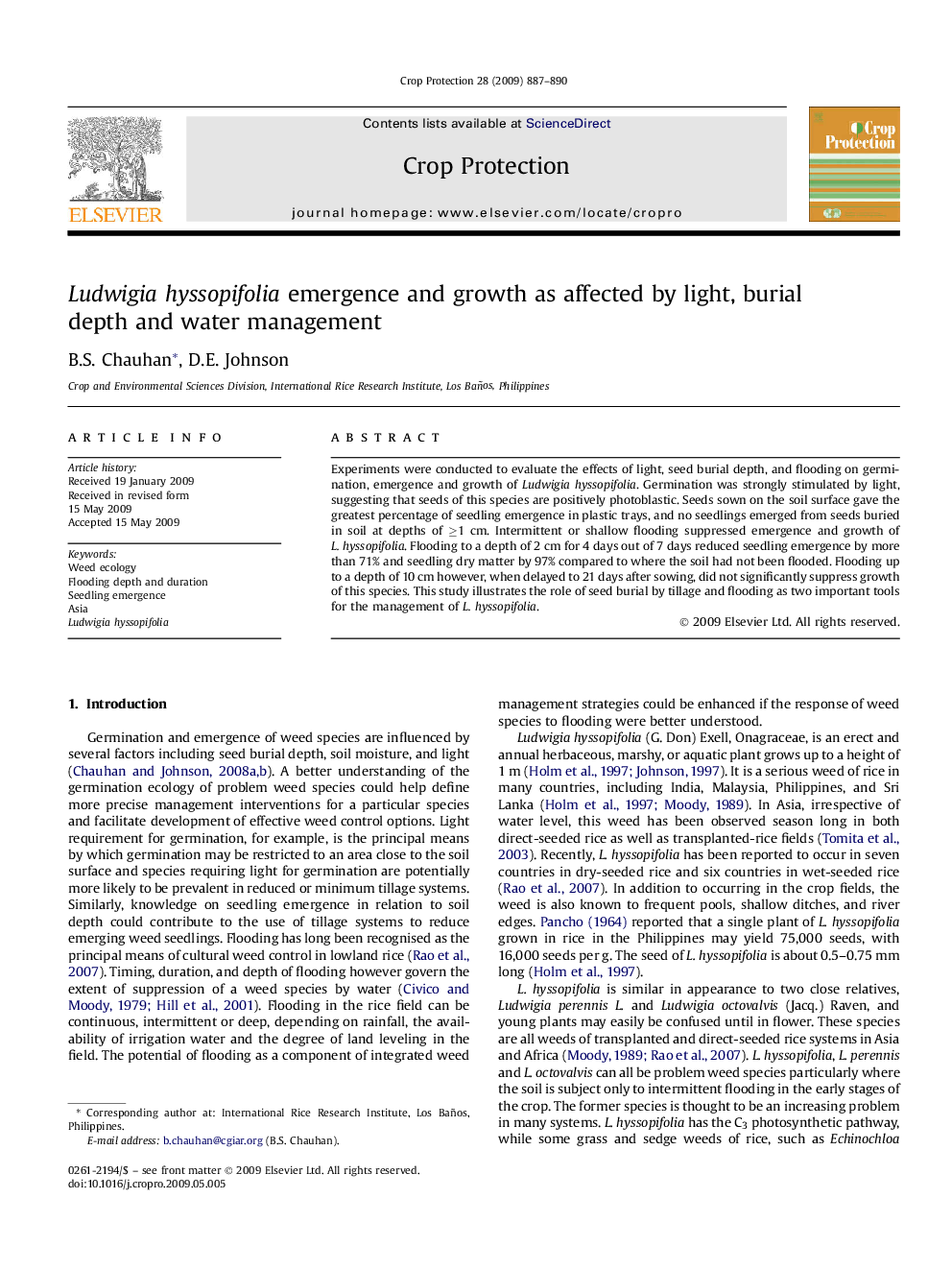| Article ID | Journal | Published Year | Pages | File Type |
|---|---|---|---|---|
| 4507310 | Crop Protection | 2009 | 4 Pages |
Experiments were conducted to evaluate the effects of light, seed burial depth, and flooding on germination, emergence and growth of Ludwigia hyssopifolia. Germination was strongly stimulated by light, suggesting that seeds of this species are positively photoblastic. Seeds sown on the soil surface gave the greatest percentage of seedling emergence in plastic trays, and no seedlings emerged from seeds buried in soil at depths of ≥1 cm. Intermittent or shallow flooding suppressed emergence and growth of L. hyssopifolia. Flooding to a depth of 2 cm for 4 days out of 7 days reduced seedling emergence by more than 71% and seedling dry matter by 97% compared to where the soil had not been flooded. Flooding up to a depth of 10 cm however, when delayed to 21 days after sowing, did not significantly suppress growth of this species. This study illustrates the role of seed burial by tillage and flooding as two important tools for the management of L. hyssopifolia.
